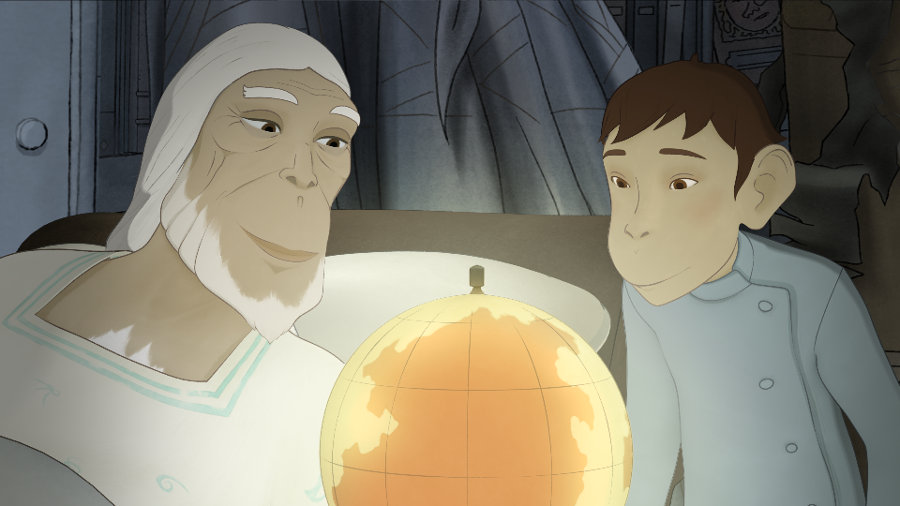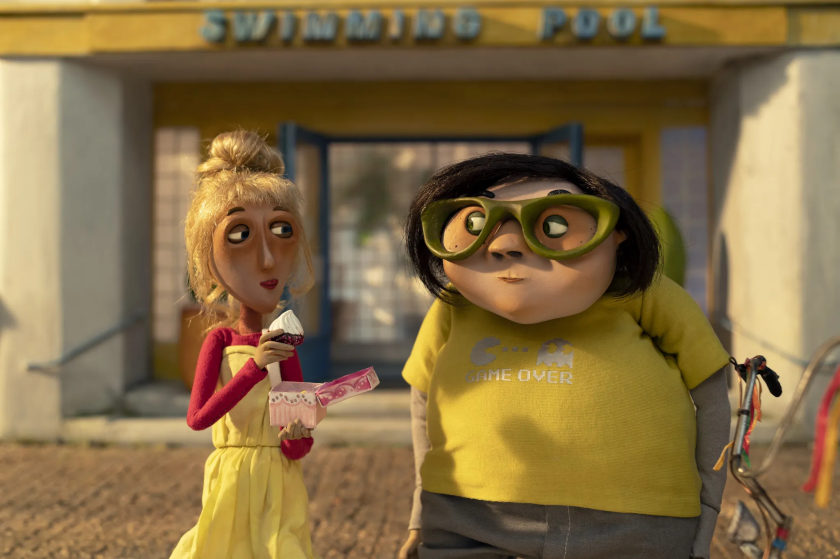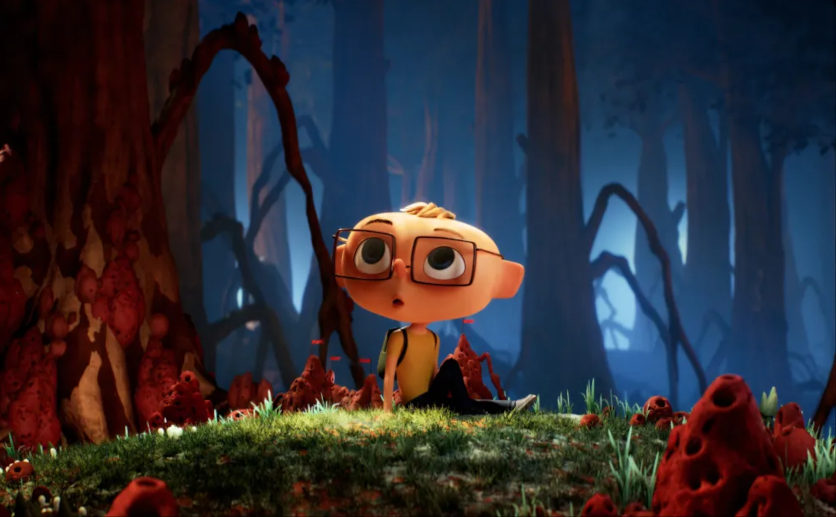Τhe Prince's Voyage Review: Looking for a Utopia

There are certain things you tend to expect from a Jean-François Laguionie film in his later cinematic output: a pre-occupation with nature and culture, social class and artistry, a watercolor feel that breezes seashore, and a solemn (but not pedantic) narration.
All of the above are evident in his later offering (co-directed with Xavier Picard), The Prince's Voyage (Le voyage du prince), a welcome pastiche of themes reworked but still cinematically potent work, told with precision and an overwhelming thirst for utopian artistic freedom.
The script, co-written by Jean-François Laguionie and Annick LeRoy, is a continuation of sorts (but not a sequel) to the story of monkey tribes in A Monkey's Tale (Le château des singes, 1999). Prince Laurence (Enrico di Giovanni), a regal monkey figure, looking and talking like a representative of the Ancien Régime, irritable but humorous as well, is washed up on an isolated beach. He is watched by inquisitive, restless, and empathetic young Tom (Thomas Sagols). The opening brings to mind the similarly-themed The Red Turtle by Michael Dudok de Wit, and establishes the rapport between the characters, much-needed to counter the prejudiced agenda the Prince is meant to experience.
Even though A Monkey's Tale references here resurface (Tom is sweetly compared to A Monkey Tale's main character Kom), what comes out as the main theme of The Prince's Voyage is not prejudice by itself, but how to construct a free and welcoming space for creative thought. That is why the secondary characters in the film look rather thin in comparison. Scientist Averbrach fell out from Academic grace; he now wants to reinstate himself by reporting Prince Laurence as an exhibit from another country in his museum plus lab environment. His assistant Nelly is kind, but powerless, whereas the most interesting female character Elizabeth (a suspicious soul, but a researcher in heart) looks she could have a better fate in a longer film version.
Which is not to say that the film is formulaic in its story sequence. Both Prince Laurence and Tom look for the creative freedom they lack in all sorts of places. The incredibly high drapes of the museum-prison confinement give their way to adventures in the big city at night; these in turn lead to a more careful forest observation -in which, perhaps, something had not already been noticed in the first place. Laurence, Tom, and their relationship hold the film together. They both look more alike than the others, and they can also understand each other's language. Laguionie and Picard will have the Prince speak (both in voice-over and in dialogue) in French, not in a different language. This is another fact that really sets the film beyond its realistic premise, a trope that was also in use with Louise and her dog in the (superb) Louise on the Shore.
The film's visuals of the sea and the lush forest beneath it do not share the compelling primitiveness of Dudok de Wit's seascape environment in The Red Turtle. The town itself in Belle Epoque mode is prominently lit, but not showcased, as Michel Ocelot did in Dilili in Paris. There is a consistent mid-point between the wild and the cultivated: the overarching forest with its tree branches threatens to overtake the cultured city buildings a city has its own dark corners of labour. The fact that Laguionie (also responsible for the film's artistic direction) is able to navigate successfully between the two gives more credence to the film's main aim that nature and nurture are both inadequate expressions to describe an artistic utopia.
Some scenes look hastily displayed, like the masked attacks (taken from The Painting and its Venice sequence). On the other hand, it's not easy to forget to sense of elation when the two characters start climbing the forest trees -their own stairway to Canopy heaven (swiftly sketched, to be honest, but welcome nonetheless). The soundtrack by Christophe Heral supports the directors' intentions like a velvet glove. Overall, The Prince's Voyage makes an admirable case in telling us that our sense of civilization is already dead, in the most visually autumnal way -and it's time to look for an alternative. This is something we already suspect from the start, but it's good to have it unfold on the screen.
Vassilis Kroustallis
CREDITS:
The Prince's Voyage (Le voyage du prince, 2019), 77 min.
Directed by:Jean-François Laguionie, Xavier Picard
Produced by : Blue Spirit Productions, Mélusine Productions
Distribution (France): Gebeka Films - International: Urban Distribution International









